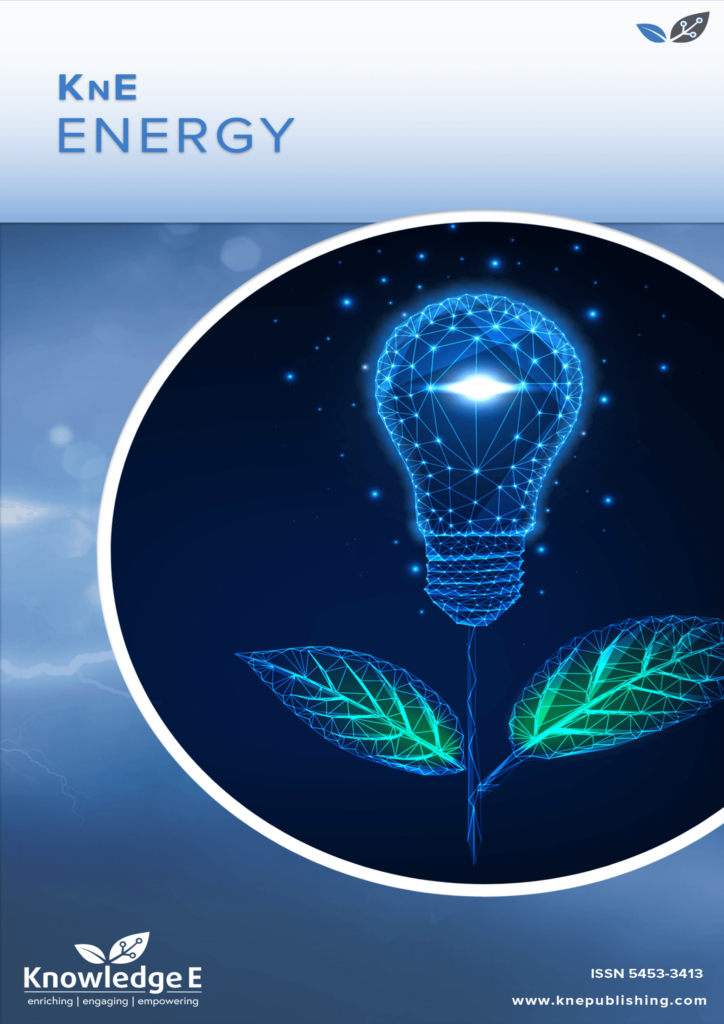
KnE Energy
ISSN: 2413-5453
The latest conference proceedings on energy science, applications and resources
Atrial Fibrillation Triggers in Patients with Coronary Artery Disease and Subclinical Thyrotoxicosis
Published date:Apr 17 2018
Journal Title: KnE Energy
Issue title: The 2nd International Symposium "Physics, Engineering and Technologies for Biomedicine"
Pages:409–415
Authors:
Abstract:
We examined 202 patients with paroxysms of symptomatic and asymptomatic atrial fibrillation (AF), some of whom suffered from coronary artery disease (CAD) andsubclinical thyrotoxicosis (ST). Healthy individuals acted as a comparison group. It was revealed that in all studied groups, extrasystoles and paroxysms of reciprocal atrioventricular orthodortic and nodal tachycardia was the role of the triggering factors of AF. In patients with ST without CAD and in healthy persons, the paroxysms of tachycardia are short and unstable. When CAD combined with ST, the number of extrasystoles and AF paroxysms is significantly higher than only in ST and in healthy individuals. It was found that in patients with asymptomatic AF the total number of extrasystoles and paroxysms of tachycardia is greater than in the case of symptomatic. Thus, the identification of concomitant subclinical thyrotoxicosis in a patient with CAD should alert the clinician to the development and progression of atrial fibrillation. It should be given great attention to screening thyroid pathology in patients with CAD.
Keywords: atrial fibrillation, coronary artery disease, subclinical thyrotoxicosis.
References:
[1] A. Ceornodolea, R. Bal, J. Severens, “Epidemiology and Management of Atrial Fibrillation and Stroke: Review of Data from Four European Countries”, Stroke Res Treat, vol. 2017:8593207, 2017.
[2] Vserossiyskoe nauchnoe obshchestvo spetsialistov po klinicheskoy elektrofiziologii, aritmologii i kardiostimulyatsii (VNOA) [All-Russian Scientific Society of Specialists in Clinical Electrophysiology, Arrhythmology and Cardiac Pacing], “Klinicheskie rekomendatsii po provedeniyu elektrofiziologicheskikh issledovaniy, kateternoy ablyatsii i primeneniyu implantiruemykh antiaritmicheskikh ustroystv (redaktsiya 2011)” [“Clinical guidelines on electrophysiological assessment, catheter ablation and the use of implanted antiarrhythmic devices”], Moscow, 518 p, 2011 (in Russian).
[3] Y. Nakajima, M. Yamada, M. Akuzawa, et al, “Subclinical hypothyroidism and indices for metabolic syndrome in Japanese women: one-year followup study”, J Clin Endocrinol Metab, vol. 98, pp. 3280-3287, 2013.
[4] P. W. Rosario, “Natural history of subclinical hyperthyroidism in elderly patients with TSH between 0.1 and 0.4 mIU/l: a prospective study”, Clin Endocrinol (Oxf), vol. 72, pp. 685-688, 2010.
[5] L. Somwaru, A. Arnold, N. Joshi, L. Fried, A. Cappola, “High frequency of and factors associated with thyroid hormone over-replacement and under-replacement in men and women aged 65 and over”, J Clin Endocrinol Metab, vol. 94, pp. 1342-1345, 2009.
[6] N. Tribulova, V. Knezl, A. Shainberg, et al, “Thyroid hormones and cardiac arrhythmias”, Vascul Pharmacol, vol. 52, pp. 102-112, 2010.
[7] O. Yonem, H. Dokmetas, S. Aslan, T. Erselcan, “Is antithyroid treatment really relevant for young patients with subclinical hyperthyroidism?”, Endocr J, vol. 49. pp. 307-314, 2002.
[8] P. Osuna, M. Udovcic, M. Sharma, “Hyperthyroidism and the Heart”, Methodist Debakey Cardiovasc J, vol. 13(2), pp. 60-63, 2017.
[9] F. K. Rakhmatullov, S. V. Klimova, A. M. Kuryaeva, N. E. Dyatlov, et al, “Pokazateli provodjashhej sistemy serdca u zhenshhin s bessimptomnymi paroksizmami” [“Indices of the conductive system of heart in women with asymptomatic paroxysms”], Izvestija vysshih uchebnyh zavedenij. Povolzhskij region. Medicinskie nauki [University proceedings. Volga region. Med Sci], vol. 1(33), pp. 78-87, 2015 (in Russian).
[10] N. E. Dyatlov, F. K. Rakhmatullov, A. M. Kuryaeva, et al, “Vzaimosvjaz’ mezhdu srokom beremennosti i sostojaniem provodjashhej sistemy serdca pri simptomnoj mercatel’noj aritmii” [“The relationship between gestation term and the condition of the heart conduction system in symptomatic atrial fibrillation”], Izvestija vysshih uchebnyh zavedenij. Povolzhskij region. Medicinskie nauki [University proceedings. Volga region. Med Sci], vol. 1(37), pp. 54-62, 2016 (in Russian).